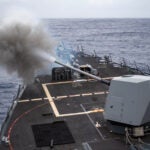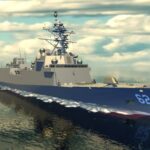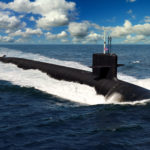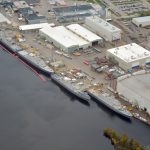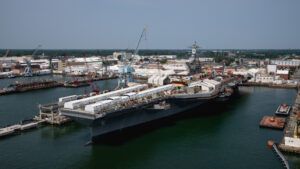
HII [HII] is pushing for the Navy to procure aircraft carriers with a strategy it dubs 2-3-4: two ship carrier block buys with three years of advance procurement (AP) and four years between ship procurement. According to a Newport News Shipbuilding executive, the company believes this strategy is needed to sustain a “stable, predictable and consistent cadence” of carriers with the company’s industrial base, the executive told reporters Monday ahead of the Surface Navy Association annual symposium. The executive said…

 By
By 